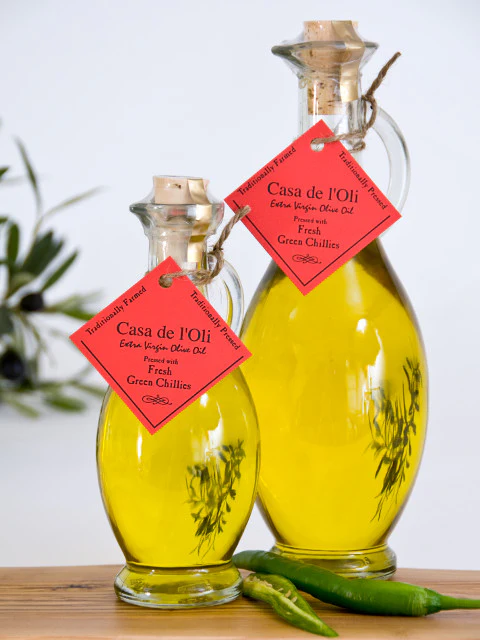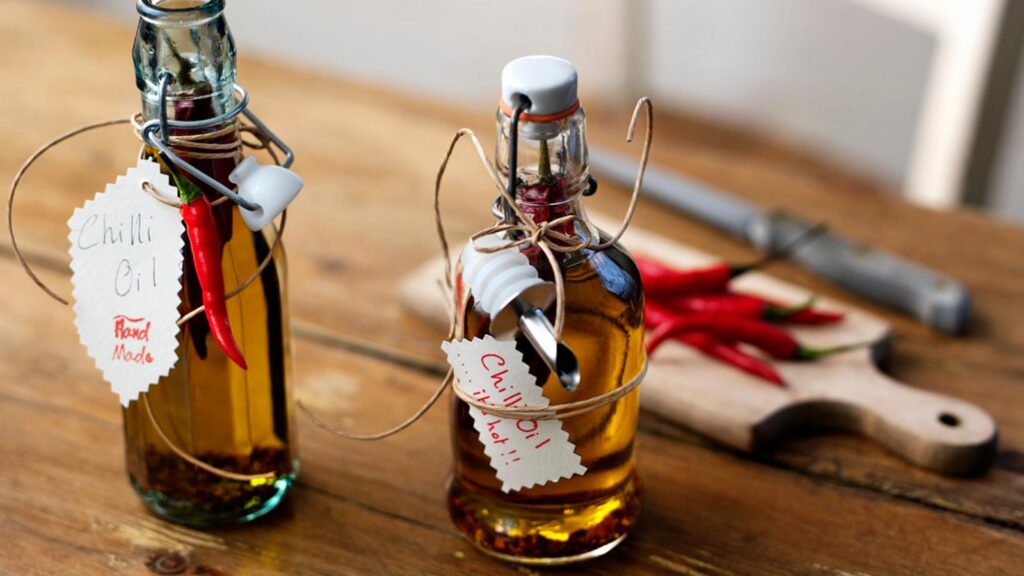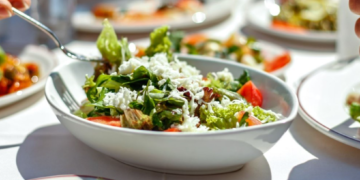The Easiest Way to Add More Flavour Without Extra Work

Cooking can feel hard when time is short. Chopping garlic, peeling onions, and cleaning a pile of tools make dinner drag on. There is a faster way to achieve bold taste without the lengthy preparation. A good flavoured oil can do the work for you. One small drizzle can make food taste warmer, richer, and more complete. No fancy skills needed, just a bottle and a spoon. This guide keeps things simple. Clear tips, no chef talk, and ideas you can use tonight with whatever is already in the kitchen. This is The Easiest Way to Add More Flavour Without Extra Work.
What flavoured olive oil actually is
Olive oil starts as pressed olives. To add extra flavour, makers blend in real ingredients, or press the olives together with them during the process. Garlic is a popular choice because it brings warmth and a savoury edge that fits with many foods. Lemon peel, chilli, and herbs are also common. The goal is the same in each case. You get the flavour you want, already mixed in, ready to use.
If peeling cloves feels endless on busy nights, many home cooks simply reach for flavoured olive oils to add depth without the mess. It is a small shortcut that still tastes like proper cooking.
Why this saves real time
Flavour usually comes from work. Chop an onion, crush garlic, toast spices, and stir for a while. With a flavoured oil, a lot of that work is done ahead of time. You pour, toss, and cook. The taste spreads evenly because the flavour is in the oil itself. That means fewer bowls, fewer knives, and less washing up after.
There is another benefit. The flavour is consistent. One clove of garlic can be tiny, another can be strong. With a good bottle, you know what you will get each time. That makes fast meals easier to trust.
When to add it for the best taste
Heat changes flavour. If the pan is very hot, delicate notes can fade. For garlic oil, gentle heat is usually best. Use it to start a dish on low to medium heat, or finish with a small drizzle at the end. Finishing keeps the smell bright and the taste round.
A simple rule helps. For foods with soft flavours, such as eggs, greens, or fish, finish at the end. For bold foods, such as roast potatoes, grilled chicken, or mushrooms, warm the oil in the pan so it blends in.
Easy ideas you can try any day
Eggs become a proper meal with almost no work. Cook them your usual way. Turn off the heat, then add a teaspoon of garlic oil. The yolk tastes richer, and toast soaks up the flavour. Breakfast and lunch are both sorted with this one move.
Pasta loves a simple sauce. Save a mug of pasta water before draining. Put the hot pasta back in the pot. Add a splash of the water, a spoon of garlic oil, and a pinch of salt. Stir until shiny. Finish with grated cheese. Five minutes, full flavour.
Roasted vegetables go from good to great. Toss carrots, peppers, or sprouts with a little plain oil and salt. Roast until tender and golden at the edges. When the tray comes out, drizzle garlic oil while it is still hot. The heat wakes the aroma and makes the edges taste sweet and savoury.
Soup needs a finish to feel complete. A swirl of garlic oil on tomato soup or blended veg soup adds perfume and a smooth mouthfeel. It also looks neat, which makes dinner feel special without any extra work.
Pizza, toasties, and flatbreads love a quick brush. A thin coat of garlic oil on the crust, the outside of a toastie, or the top of a warmed flatbread gives a golden sheen and a bakery smell. It takes seconds and tastes far better than dry bread.
Salads do not need long ingredient lists. A small splash of garlic oil, a squeeze of lemon, and a pinch of salt make a balanced dressing. The oil brings the savoury note, the lemon brings the lift, and the salt ties it together.

How much to use
Start small. A teaspoon can be enough for one plate. Two or three teaspoons can dress a tray of vegetables. Add a little, taste, then decide. It is easier to build flavour than to fix an overpowering dish. If you go too far, stir in plain olive oil to soften the taste.
Balancing the plate without guessing
Great food usually balances four things. Salt, fat, sour, and sweet. Garlic oil brings fat and a savoury note. Add a pinch of salt so the flavour stands up. Bring a touch of sour with lemon or vinegar to brighten the dish. Sweetness can come from cooked onions, roasted carrots, or tomatoes. When these pieces line up, even simple meals feel complete.
Try this quick check. If a dish tastes dull, add a pinch of salt. If it tastes heavy, add acid with lemon juice. If it tastes sharp, add a little more oil. Small changes matter more than big ones.
Cooking for different tastes at the same table
Families have mixed taste buds. One person wants strong garlic, another wants only a hint. Keep the base dish mild, then pass the bottle at the table. Everyone adds a few drops to taste. No arguments, no second pan to wash, and everyone gets the flavour they want.
Safety and storage made easy
Keep the cap tight. Store in a cool, dark cupboard away from the cooker. Heat and light can tire the oil and dull the flavour. Wipe the neck of the bottle so it seals well. Use a clean spoon when tasting so the oil stays fresh.
Homemade garlic oil is a different story. Fresh garlic in plain oil can be risky if held at room temperature for days. If you ever make your own, keep it in the fridge and use it soon. A sealed, commercial bottle is designed for the shelf, so normal cupboard storage is fine.
What to look for when choosing a bottle
You do not need a giant range to cook well. One reliable garlic oil covers a lot of meals. Give it a simple test on day one. Drizzle a little on a warm slice of bread with a pinch of salt. If it smells bright and tastes clean, it will work in many dishes. If it tastes harsh, use it for cooking on low heat rather than as a finish.
The type of olive can change the taste. Arbequina tends to be soft and buttery. Picual can taste greener and a bit peppery. Either can be great when paired with garlic. Pick the style that matches your food. Soft oils suit eggs and fish. Greener oils stand up to greens, beef, or strong cheese.
Small extras that make it even easier
Keep a small pouring spout or a clean teaspoon next to the bottle. That stops heavy pours. Put the bottle where you actually cook, not hidden at the back of a shelf. Use it often in tiny amounts. The habit is what saves time, not a once a month splash.
When heating the oil, keep the flame gentle. If it starts to smoke, it is too hot and the flavour will fade. Take the pan off the heat for a moment, then continue on low. The aim is warm and fragrant, not scorched.
Why this simple swap earns a place in any kitchen
Time is the hardest part of weeknight meals. Flavoured oils make time stretch. They remove steps without removing taste. Eggs, pasta, roasted vegetables, soup, toasties, and salads all get better with a spoon of garlic oil. There is no extra chopping, no long list, and no big clean up. It is just a smarter way to use the same pan and the same basic food.
Key points to remember
Use flavoured oil near the end for bright aroma, or on gentle heat so it blends in. Start with small amounts, then taste and adjust. Balance salt, fat, sour, and sweet so simple food feels whole. Store the bottle cool and dark, and keep the cap tight. Make the bottle easy to reach, use it often in tiny doses, and let it replace extra chopping on busy days.









